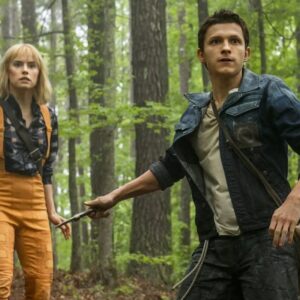
“Chaos Walking” (2021) is a science fiction film directed by Doug Liman and based on the novel The Knife of Never Letting Go by Patrick Ness.
“Chaos Walking” is a 2021 science fiction film directed by Doug Liman, based on the novel The Knife of Never Letting Go by Patrick Ness, which is the first book in his Chaos Walking trilogy. The film explores a dystopian future where society has been altered by a mysterious phenomenon known as “The Noise,” creating a unique and dangerous world.
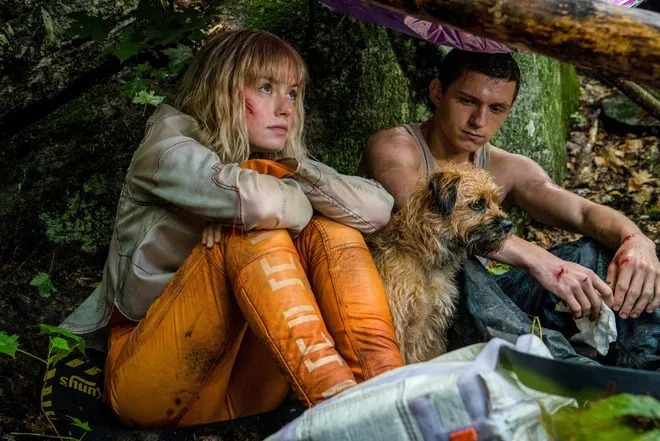
Plot Summary
Set in a distant future, “Chaos Walking” takes place on a colonized planet called New World, where a mysterious pathogen has caused all men’s thoughts to become audible, a condition referred to as “The Noise.” This phenomenon makes every man’s inner thoughts visible and audible to others, creating a chaotic and often dangerous environment where privacy is impossible, and secrets cannot be kept. However, strangely, women are immune to “The Noise” and are unaffected by this phenomenon.
The story follows Todd Hewitt (played by Tom Holland), a young man who lives in Prentisstown, a settlement where all the women have mysteriously disappeared, and the male inhabitants have adapted to life with “The Noise.” Todd is raised by his adoptive fathers, Ben (Demián Bichir) and Cillian (Kurt Sutter), who try to protect him from the harsh realities of their world.

Todd’s life changes dramatically when he encounters Viola Eade (played by Daisy Ridley), a mysterious young woman who has crash-landed on New World and whose arrival shocks the male-dominated society of Prentisstown. Viola represents the first woman Todd has ever seen and is immune to “The Noise,” which makes her presence even more extraordinary and threatening to the townsmen.
As Todd and Viola try to understand each other, they uncover the dark secrets of Prentisstown and the true nature of “The Noise.” Together, they embark on a perilous journey across New World, fleeing from the men of Prentisstown, led by the sinister Mayor Prentiss (Mads Mikkelsen), who seeks to capture Viola and control the fate of the planet’s settlers.
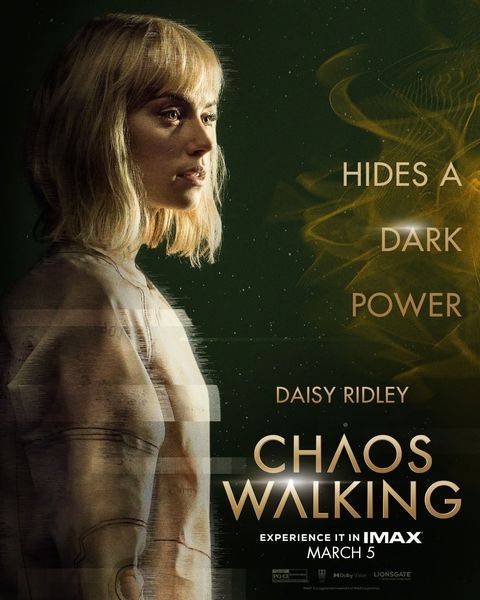
As they journey through dangerous terrain, Todd and Viola must navigate both the external threats of the planet and their own internal conflicts, learning to trust each other amidst the ever-present, invasive “Noise” that exposes Todd’s every thought. Their quest uncovers the deeper mystery of New World, the fate of the planet’s previous settlers, and the real reasons behind the gender divide created by “The Noise.”
Themes and Impact
“Chaos Walking” explores themes of privacy, communication, power, and trust. It delves into the psychological effects of a world where thoughts are constantly exposed, examining how such a phenomenon affects personal relationships, social structures, and power dynamics. The film also touches on the complexities of gender, survival, and colonization, as the settlers struggle to establish a new society amidst unknown dangers.
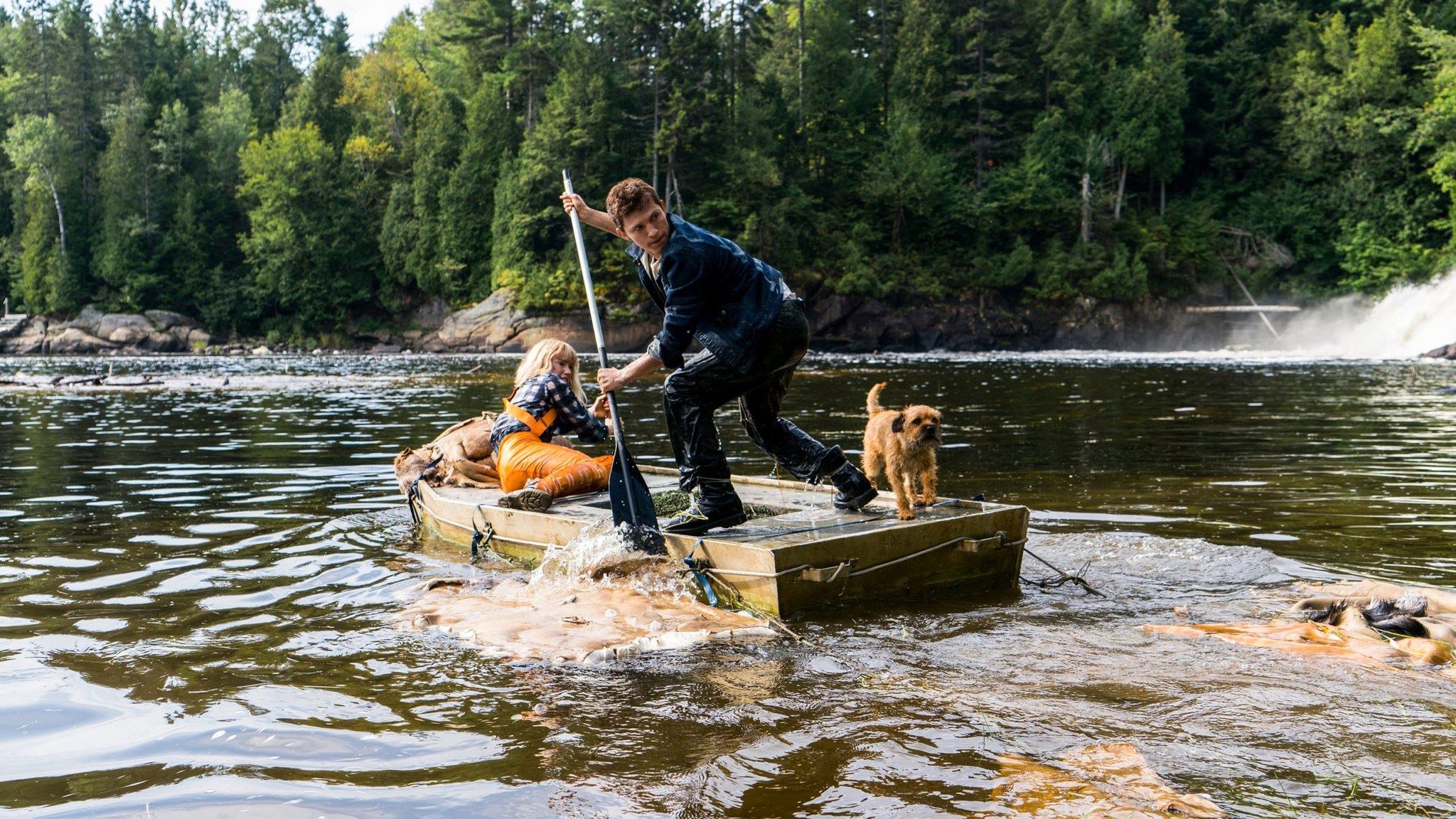
Despite its intriguing premise and strong performances from Tom Holland and Daisy Ridley, “Chaos Walking” received mixed reviews from critics, who praised the concept and the actors’ chemistry but criticized the film’s pacing and narrative execution. The adaptation faced numerous production challenges, including multiple reshoots and delays, which impacted its final reception.
Conclusion
“Chaos Walking” presents a unique blend of science fiction and adventure, offering a fresh perspective on the consequences of a world where thoughts are no longer private. While it may not have fully captured the depth of Patrick Ness’s original novel, the film remains a visually engaging and thought-provoking exploration of a dystopian future and the complexities of human interaction in a world without secrets.
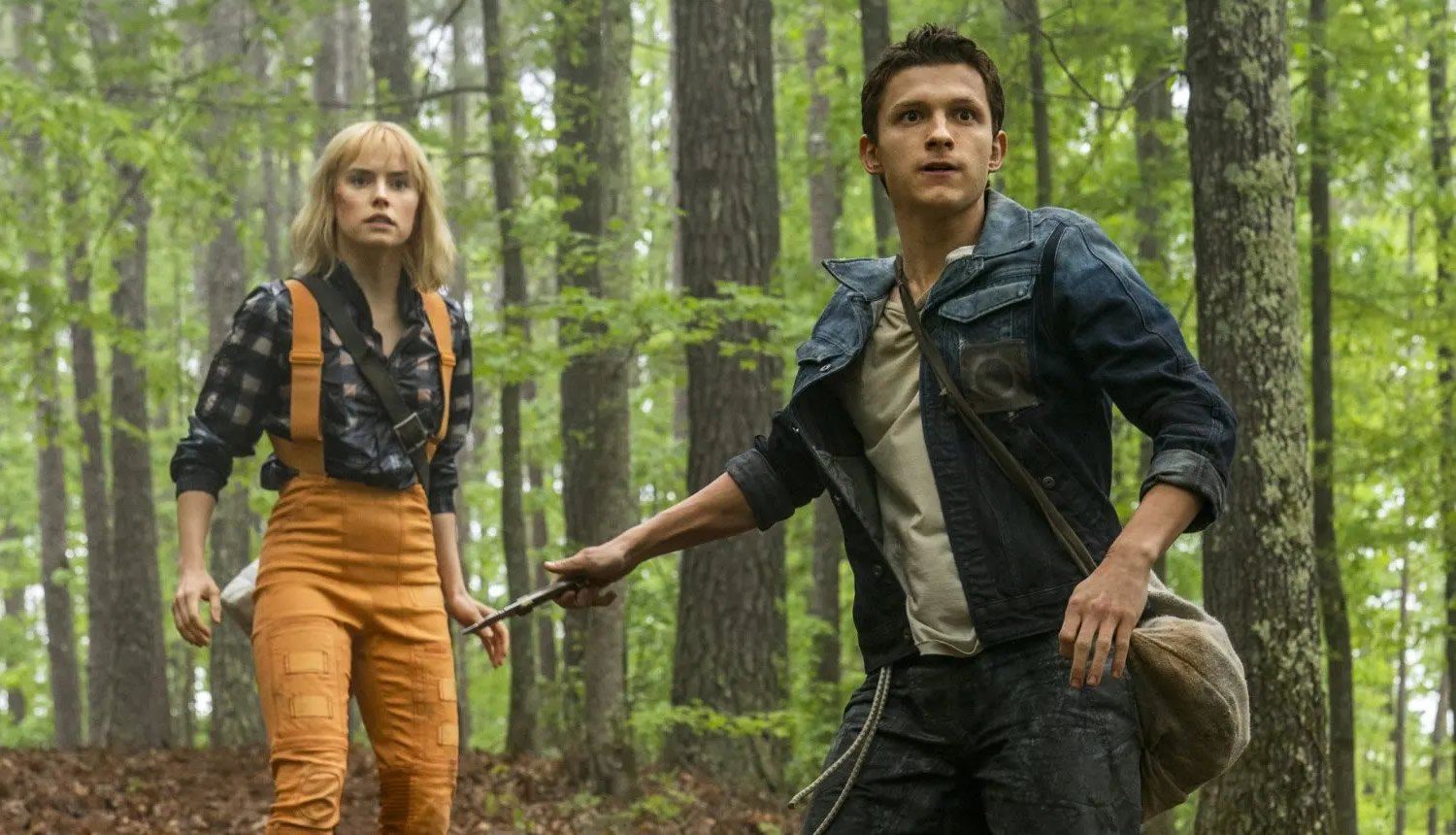
WATCH:

“A Quiet Place Part II” (2021) is a horror thriller directed by John Krasinski.
“A Quiet Place Part II” is a 2021 horror thriller film directed by John Krasinski, serving as a sequel to the 2018 hit film “A Quiet Place.” The movie continues the story of the Abbott family as they navigate a terrifying world overrun by deadly alien creatures that hunt by sound, forcing the survivors to live in near silence.
Plot Summary
The film opens with a flashback, showing the arrival of the alien creatures on Earth. It depicts a seemingly ordinary day in the small town where the Abbott family lives, which quickly turns into chaos as meteors crash to the ground, releasing the creatures that immediately begin attacking anything that makes noise. This sequence serves to provide some background on the origins of the deadly invasion and to reintroduce Lee Abbott (played by John Krasinski), who sacrificed himself in the first film to save his family.
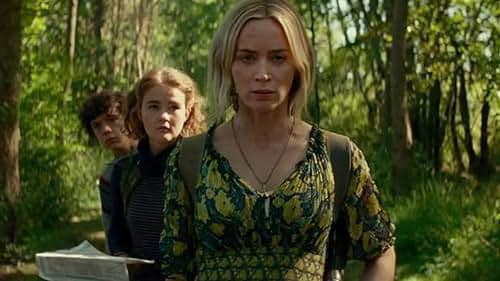
“A Quiet Place Part II” then picks up immediately after the events of the first film, with the Abbott family—Evelyn (Emily Blunt), her daughter Regan (Millicent Simmonds), her son Marcus (Noah Jupe), and her newborn baby—forced to leave their destroyed home in search of a new place to survive. They have discovered that high-frequency sound, such as that produced by Regan’s hearing aid, can be used to incapacitate the creatures, giving them a valuable weapon in their fight for survival.
As the family ventures beyond the boundaries of their familiar surroundings, they quickly realize that the dangers they face are not limited to the alien creatures. They encounter other survivors, including Emmett (Cillian Murphy), a man grappling with his own losses and struggling to maintain hope in this brutal world. Emmett initially shows reluctance to help the Abbotts but is eventually moved by their determination and the memory of their shared past.
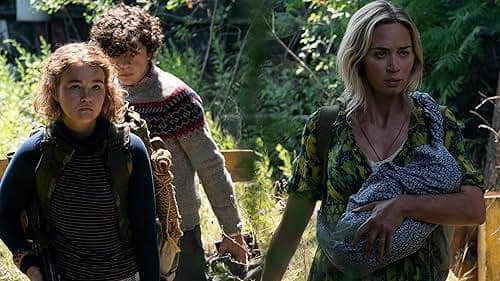
Regan, who is deaf, becomes increasingly determined to find a way to use her hearing aid to broadcast a sound that can drive the creatures away, inspired by her father’s legacy of protection and ingenuity. She decides to set out on her own to find a nearby radio station that could transmit the frequency across a wider area. Marcus, injured and terrified, is left to protect their mother and newborn sibling while grappling with his fears in this perilous new reality.
As the story unfolds, Emmett decides to accompany Regan on her mission, recognizing the need for hope and connection in a world that has become bleak and desperate. Their journey through abandoned towns and perilous environments is filled with tension, as they must move silently and carefully to avoid attracting the creatures. Along the way, they encounter other survivors, some of whom have been driven to madness or violence by their experiences, highlighting the various ways people cope with extreme fear and loss.
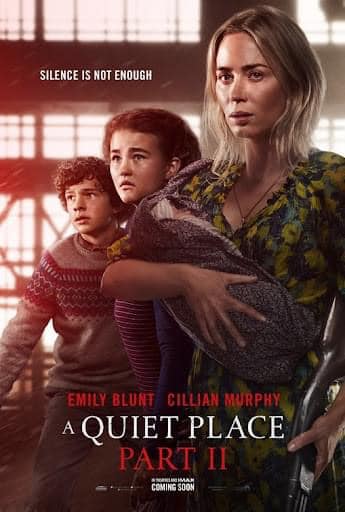
Meanwhile, Evelyn and Marcus remain in hiding with the baby, facing their own dangers, including dwindling supplies and the constant threat of discovery. The film builds to a suspenseful climax as the characters’ paths converge and the full potential of Regan’s discovery is tested in a desperate bid for survival.
Themes and Impact
“A Quiet Place Part II” explores themes of survival, family, and resilience in the face of unimaginable horrors. It delves into the human capacity for hope and ingenuity even when facing overwhelming odds. The film continues to emphasize the importance of silence and sound, using the absence of dialogue and ambient noise to create a tense, immersive experience for the audience. The use of sound—or the lack thereof—remains a central narrative device, maintaining the unique and chilling atmosphere that made the first film so compelling.

The movie received positive reviews from critics and audiences alike, praised for its intense suspense, strong performances, particularly from Emily Blunt, Millicent Simmonds, and Cillian Murphy, and its effective use of sound design. Krasinski’s direction was lauded for building on the original film’s strengths while expanding the story in new and unexpected ways. The sequel was also noted for its exploration of Regan’s character, who emerges as a central figure in the fight for survival, showcasing the strength and determination of a young heroine.
Conclusion
“A Quiet Place Part II” successfully builds on the foundations laid by its predecessor, delivering a gripping, edge-of-your-seat experience that deepens the emotional stakes and expands the world of the story. With its clever use of sound, compelling characters, and relentless tension, the film cements its place as a standout entry in the horror thriller genre, leaving viewers eagerly anticipating the next chapter in the Abbott family’s harrowing journey.
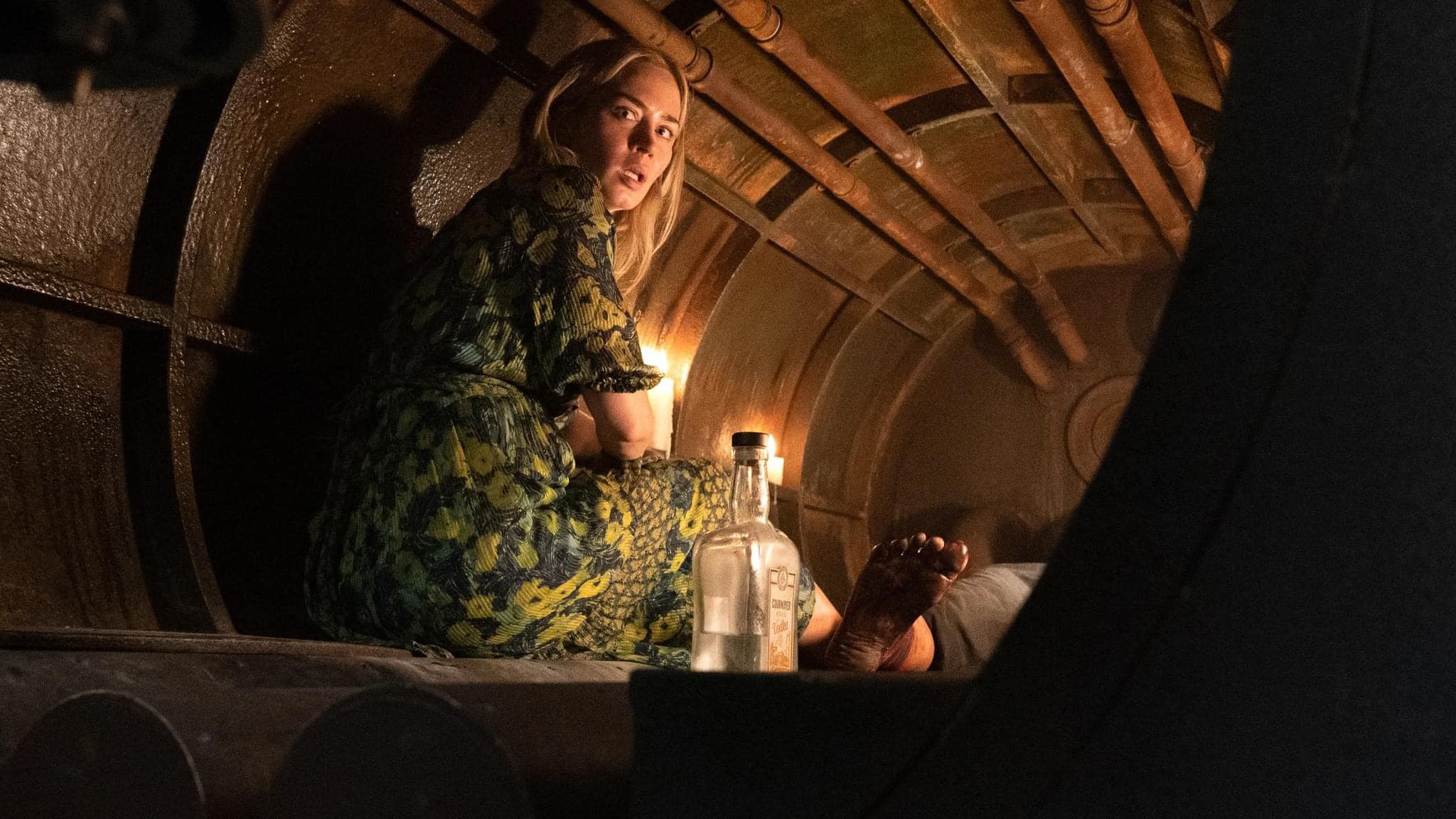
WATCH:
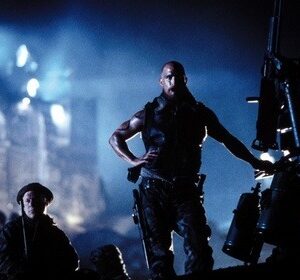
“Reign of Fire” (2002) is a post-apocalyptic action-fantasy film directed by Rob Bowman.
“Reign of Fire” is set in a dystopian future where dragons have emerged as the dominant species on Earth, reducing human civilization to ashes. The story begins in present-day London, where a young boy named Quinn Abercromby inadvertently awakens a dormant dragon during an excavation project. This singular event sets off a chain reaction, releasing more dragons from hibernation and igniting a global cataclysm.
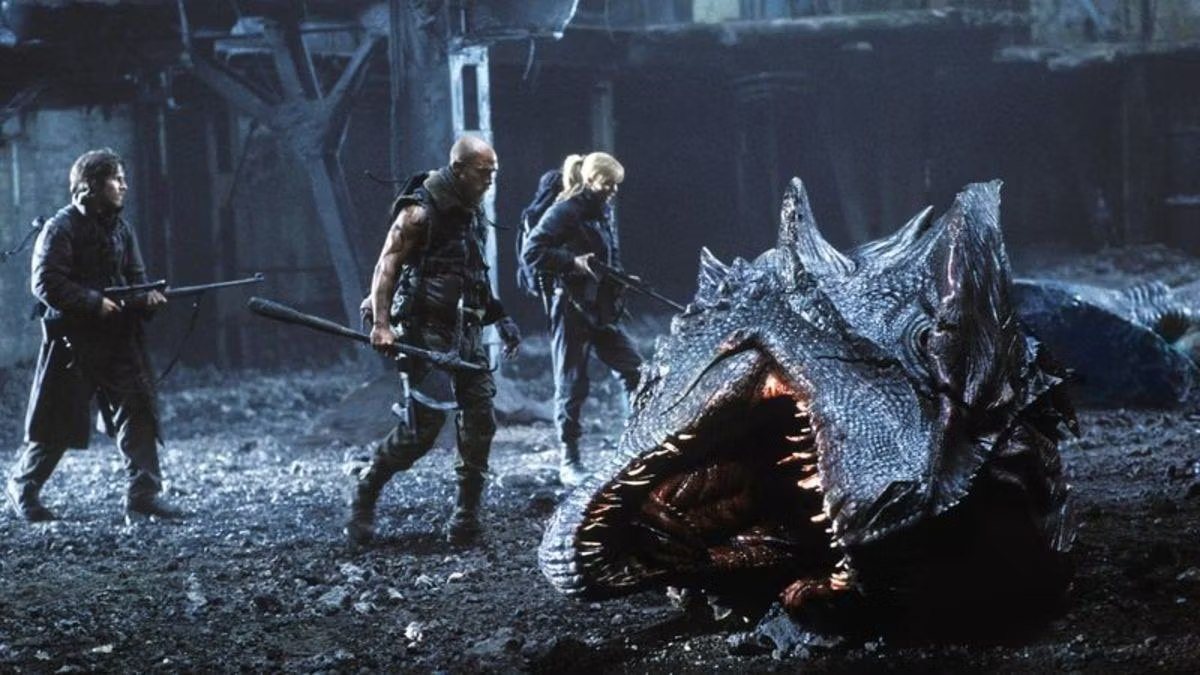
Twenty Years Later:
The narrative jumps forward to 2020, where dragons have scorched the planet into a barren wasteland. Humanity is on the brink of extinction, with only a few pockets of survivors scattered across the globe. One such group, led by a now-adult Quinn (Christian Bale), has taken refuge in a fortified castle in Northumberland, England. Quinn is haunted by his past, burdened by the knowledge that he was responsible for the dragons’ reawakening.
The survivors live under constant threat from the dragons, which hunt them from the skies. To avoid detection, they live by strict rules: never to venture out at night and always keep a watchful eye on the sky. Supplies are dwindling, and morale is low, but Quinn’s leadership keeps the community together. He shares stories with the children to keep hope alive, recounting tales of a world before dragons—a world of peace and prosperity.
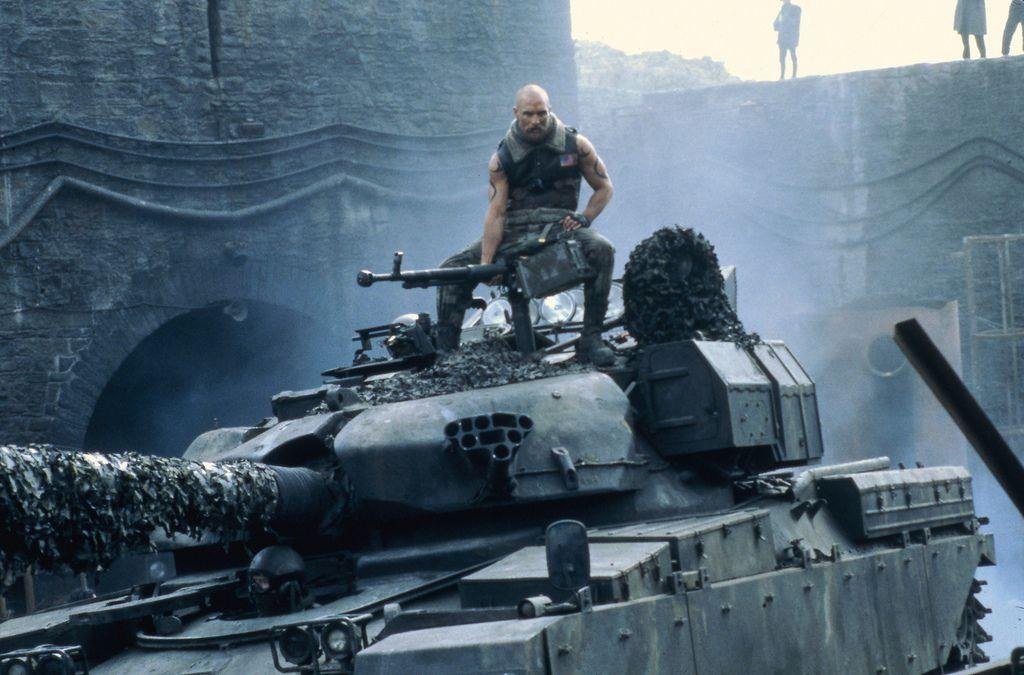
The Arrival of the Americans:
The fragile existence of Quinn’s group is disrupted by the arrival of a group of American soldiers led by the charismatic and battle-hardened Denton Van Zan (Matthew McConaughey). Van Zan’s convoy, equipped with tanks and helicopters, arrives at the castle, seeking shelter. Initially suspicious of the newcomers, Quinn is wary of Van Zan’s aggressive demeanor and bold claims.
Van Zan, however, brings a radical new strategy: instead of hiding, they should take the fight to the dragons. He reveals his belief that all dragons are females, except for one—the alpha male. If they can kill the male, the dragons will die out, as they will not be able to reproduce. Quinn is skeptical but reluctantly agrees to join forces with Van Zan, driven by the hope of a future free from dragons.
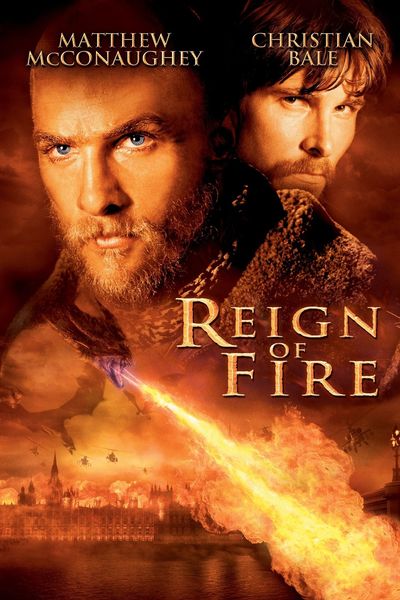
The Battle for Survival:
Van Zan’s unorthodox methods are both awe-inspiring and terrifying. He uses himself as bait, diving out of helicopters to lure dragons into traps, displaying a reckless bravado that both impresses and concerns Quinn’s group. Despite initial successes, the losses are heavy, and Quinn’s group begins to splinter under the pressure of Van Zan’s relentless tactics.
Tensions escalate when Van Zan leads an ill-fated attack on a dragon nest, resulting in the death of several survivors. Quinn, now seeing the true cost of Van Zan’s methods, decides to part ways. However, Van Zan is undeterred, convinced that they are close to finding the male dragon.
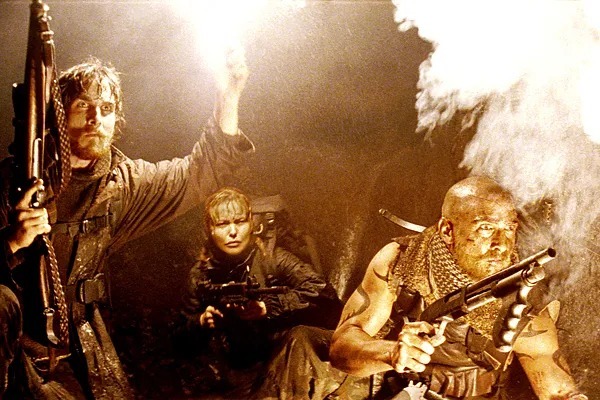
The Final Showdown:
After a disastrous raid, they finally identify the alpha male’s lair in the ruins of London, where it all began. Realizing the dragon’s lair is the same place where he first saw the dragon as a child, Quinn decides to confront his past once and for all. Joined by Van Zan and his close friend Alex Jensen (Izabella Scorupco), a helicopter pilot who shares his cautious approach, Quinn leads a final, desperate mission to kill the alpha male.
The battle is fierce and brutal. As they navigate the scorched ruins of London, they face one last trial against the most powerful and cunning dragon they’ve encountered. Van Zan sacrifices himself in a valiant attempt to weaken the dragon, allowing Quinn and Alex to strike the final blow. Using the last of their resources, they manage to destroy the beast in a climactic and explosive confrontation.
A New Dawn:
With the alpha male dead, the surviving dragons begin to die off, and the skies slowly clear of the smoke and ash that have choked the world for years. Humanity’s path to recovery is still uncertain, but for the first time in decades, there is hope. Quinn and Alex, standing amidst the ruins of a world they once knew, look forward to rebuilding and reclaiming the Earth from the ashes of the dragon apocalypse.
“Reign of Fire” ends on a hopeful note, with the survivors beginning to rebuild, united by their shared struggle and the dream of a world where humanity can rise once more.
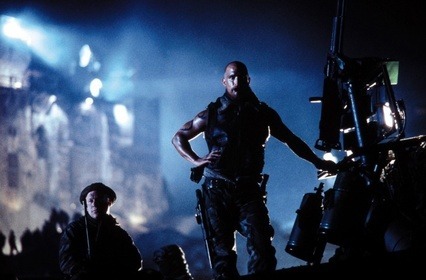
WATCH:

“Platoon” (1986) is a harrowing and immersive war film directed by Oliver Stone, based on his own experiences as a soldier in Vietnam.

As Taylor navigates the treacherous terrain and the volatile dynamics within his unit, he becomes increasingly disillusioned with the war and its impact on his fellow soldiers. The platoon is constantly under threat from both the Viet Cong and the ever-present danger of the jungle itself. The soldiers grapple with the physical and psychological strain, struggling to maintain their sanity and morality in an environment that seems determined to strip them of both.
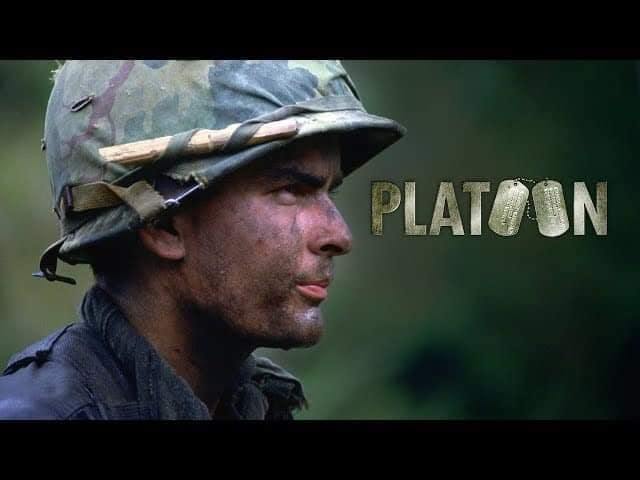
The tension between Barnes and Elias comes to a head during a controversial raid on a Vietnamese village. The operation turns into a nightmare, revealing the darkest sides of the men. Taylor witnesses atrocities committed by his own comrades, further deepening his internal conflict and questioning the very nature of good and evil. The raid’s aftermath leads to a dramatic confrontation between Barnes and Elias, culminating in an unforgettable scene that forces Taylor to choose which path he will follow.
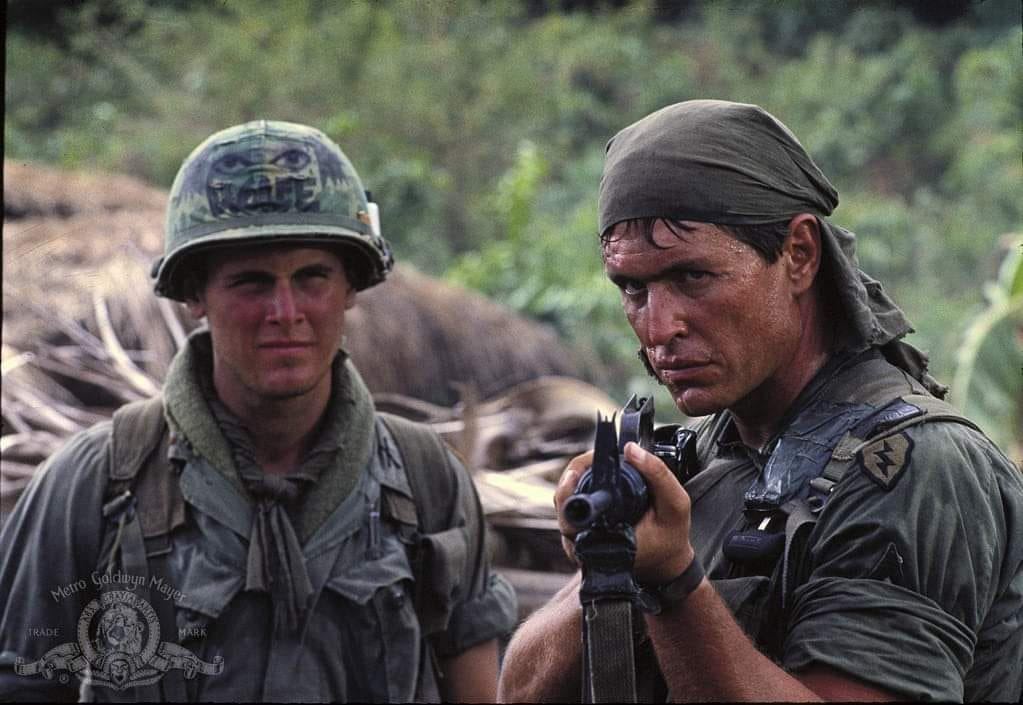
As the film progresses, Taylor’s transformation from an innocent young man into a battle-scarred survivor becomes a powerful metaphor for the loss of innocence experienced by an entire generation. “Platoon” doesn’t shy away from depicting the brutal realities of war, from the intense firefights and guerilla tactics to the haunting psychological scars that linger long after the battle is over.
In its climax, “Platoon” delivers a powerful message about the futility and tragedy of war. Through Oliver Stone’s lens, the film becomes not just a story of one man’s journey, but a broader critique of the Vietnam War and its devastating impact on all who were involved. “Platoon” remains a landmark in war cinema, offering a raw and unflinching look at the complexities of conflict and the human cost of violence.
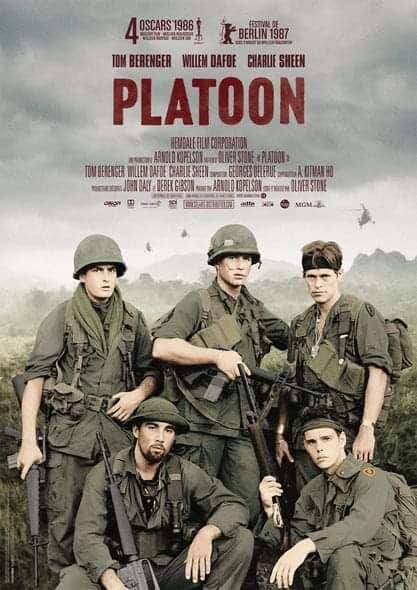
WATCH:
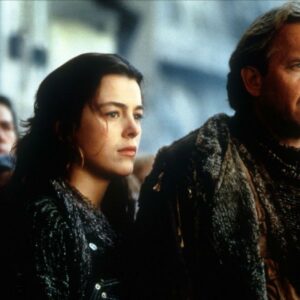
“The Postman” (1997) is a post-apocalyptic adventure film directed by and starring Kevin Costner.
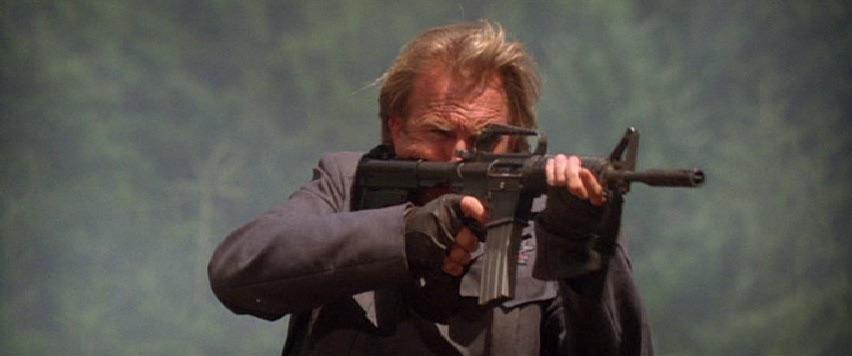
The drifter eventually escapes the clutches of the Holnists and stumbles upon an old abandoned mail truck. Inside, he finds a bag of undelivered letters and a postal uniform. Out of desperation and a sense of irony, he dons the uniform and begins delivering the old letters to nearby settlements, spinning a tale that he is a postman representing a newly reformed United States government. Though his story is a fabrication, it captures the imagination of the people who are hungry for hope and a sense of normalcy in a world that has lost both.
As the drifter continues his journey, his role as “The Postman” becomes more than just a con. The simple act of delivering letters starts to rekindle the spirit of community and communication among the scattered survivors. People begin to believe in the possibility of a united nation once again. Inspired by his actions, others join his cause, forming a network of postmen and women who carry messages of hope and unity across the fractured landscape.
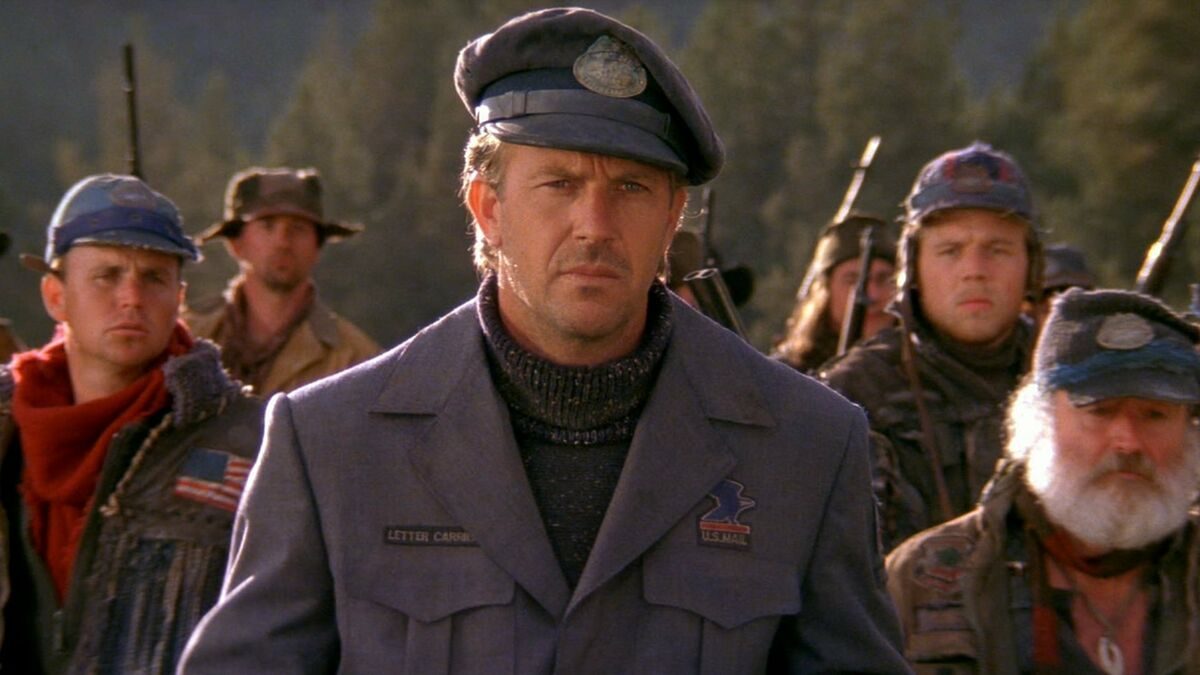
However, General Bethlehem views this newfound hope as a direct threat to his authority and the control of his militia. Determined to crush any spark of rebellion, he launches a campaign to hunt down The Postman and his followers. This sets the stage for a climactic battle between those who seek to rebuild a society based on cooperation and trust, and those who wish to maintain power through fear and violence.
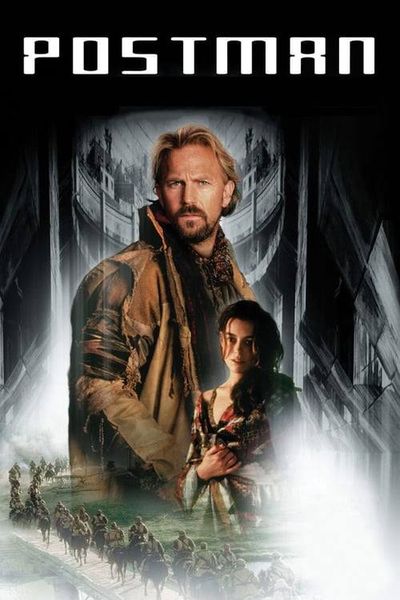
In the end, The Postman’s efforts ignite a movement that spreads beyond his control. The act of delivering mail becomes a symbol of hope, sparking a revival of community spirit and inspiring people to reclaim their humanity in a world that has forgotten it. The film concludes with a sense of optimism, suggesting that even in the darkest of times, small acts of kindness and courage can lay the foundation for a better future.
“The Postman” is a film that, despite its mixed critical reception, offers a heartfelt exploration of the themes of redemption, hope, and the enduring power of human connection in the face of overwhelming adversity. It stands as a testament to the idea that even in a post-apocalyptic world, the human spirit can find a way to persevere.
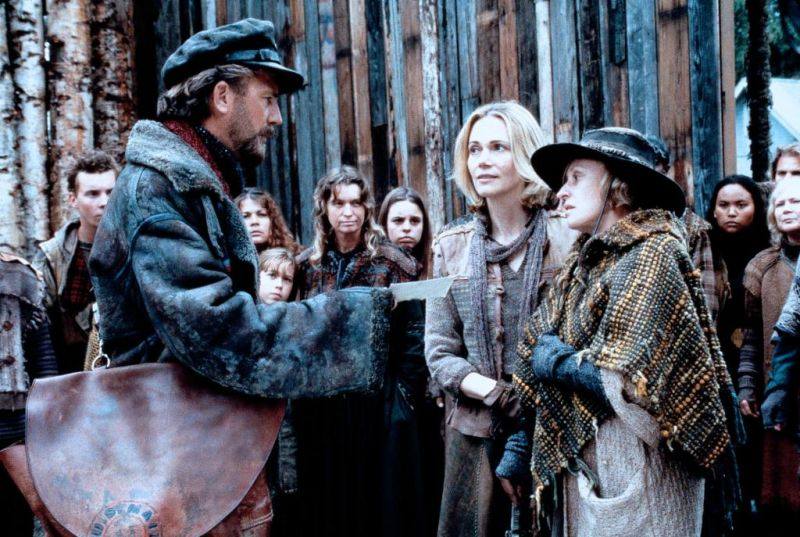
WATCH:
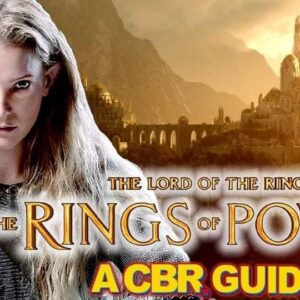
“The Lord of the Rings: The Rings of Power” (2022) is an epic fantasy television series set in J.R.R. Tolkien’s Middle-earth universe.
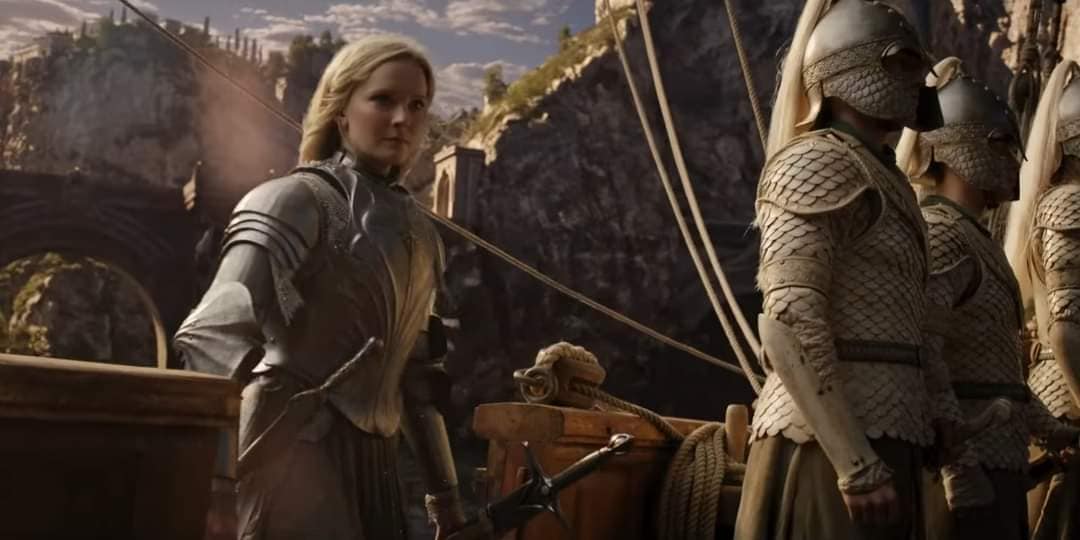
At the heart of the series is the creation of the Rings of Power, magical artifacts crafted to harness incredible power. The elven smith Celebrimbor, with guidance from a mysterious stranger who later reveals himself as Sauron in disguise, forges the rings, believing they will bring about a new era of prosperity. Unbeknownst to him, Sauron has his own dark designs and secretly forges the One Ring, a master ring that grants him dominion over all the others.
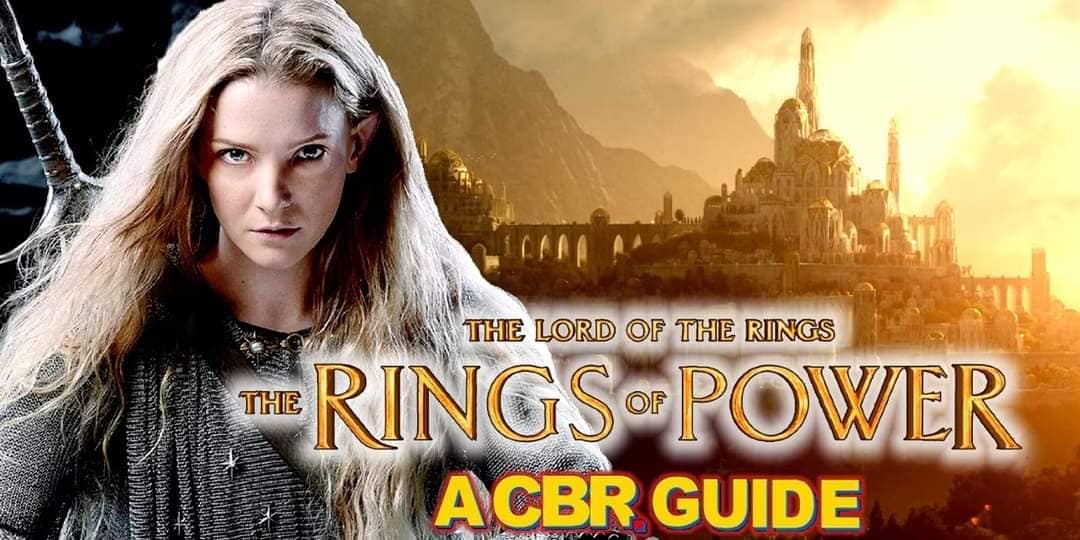
As the series progresses, a diverse array of characters come to the forefront, each playing a crucial role in the unfolding drama. Galadriel, the fierce and determined elven warrior, embarks on a quest to hunt down Sauron and avenge her fallen kin. Elrond, a young and politically savvy elf, navigates the treacherous waters of Middle-earth’s alliances, seeking to build unity among its peoples. Meanwhile, on Númenor, a powerful kingdom of Men blessed with longevity, we witness the growing tension between those who remain faithful to the Valar, the angelic guardians of the world, and those who resent the immortality of the Elves and desire greater power.
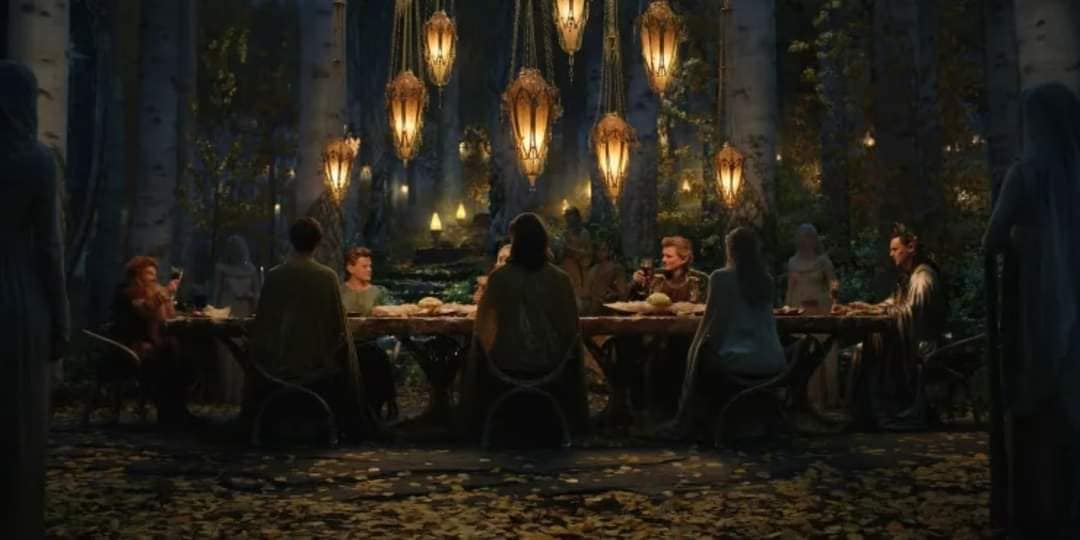
The series also introduces viewers to the early conflicts between the Elves, Dwarves, and Men, exploring their complex relationships, alliances, and rivalries. As darkness spreads across the land, these races must decide whether to stand together or fall apart in the face of Sauron’s growing influence.
“The Rings of Power” delves into themes of power, corruption, friendship, and sacrifice, drawing on Tolkien’s extensive appendices and notes to craft a story that resonates with both new fans and long-time enthusiasts of Middle-earth. With its stunning visuals, richly developed characters, and intricate storytelling, the series captures the epic scope and grandeur of Tolkien’s world while offering a fresh perspective on its deep mythology.
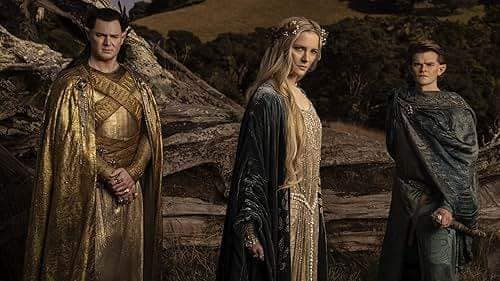
WATCH:
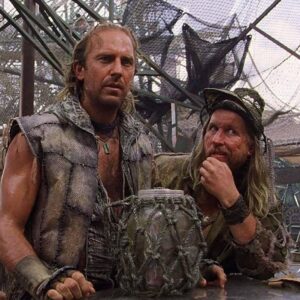
Waterworld (1995) is a post-apocalyptic science fiction film directed by Kevin Reynolds and starring Kevin Costner, who also produced the film.
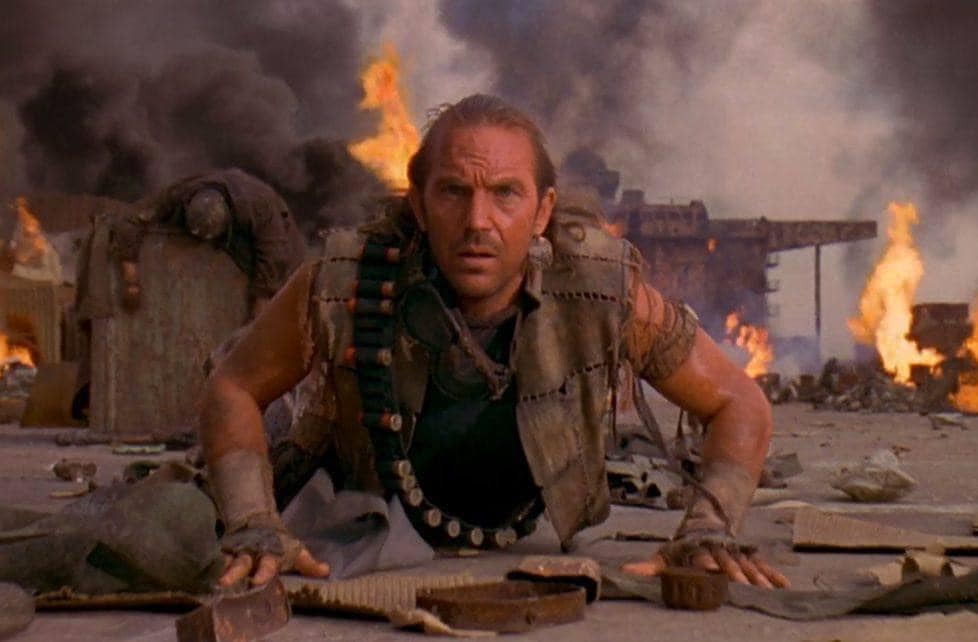
The plot kicks into gear when The Mariner arrives at an atoll seeking supplies. There, he encounters Helen (Jeanne Tripplehorn), a strong-willed woman, and her young ward, Enola (Tina Majorino), a girl with a mysterious tattoo on her back that some believe is a map to the mythical “Dryland,” the last remaining piece of solid ground on Earth. The atoll’s inhabitants, wary of The Mariner’s mutations, imprison him, fearing he might be a threat. However, when the Smokers launch a brutal attack on the atoll in their relentless pursuit of Enola and her map, The Mariner is reluctantly drawn into the conflict.
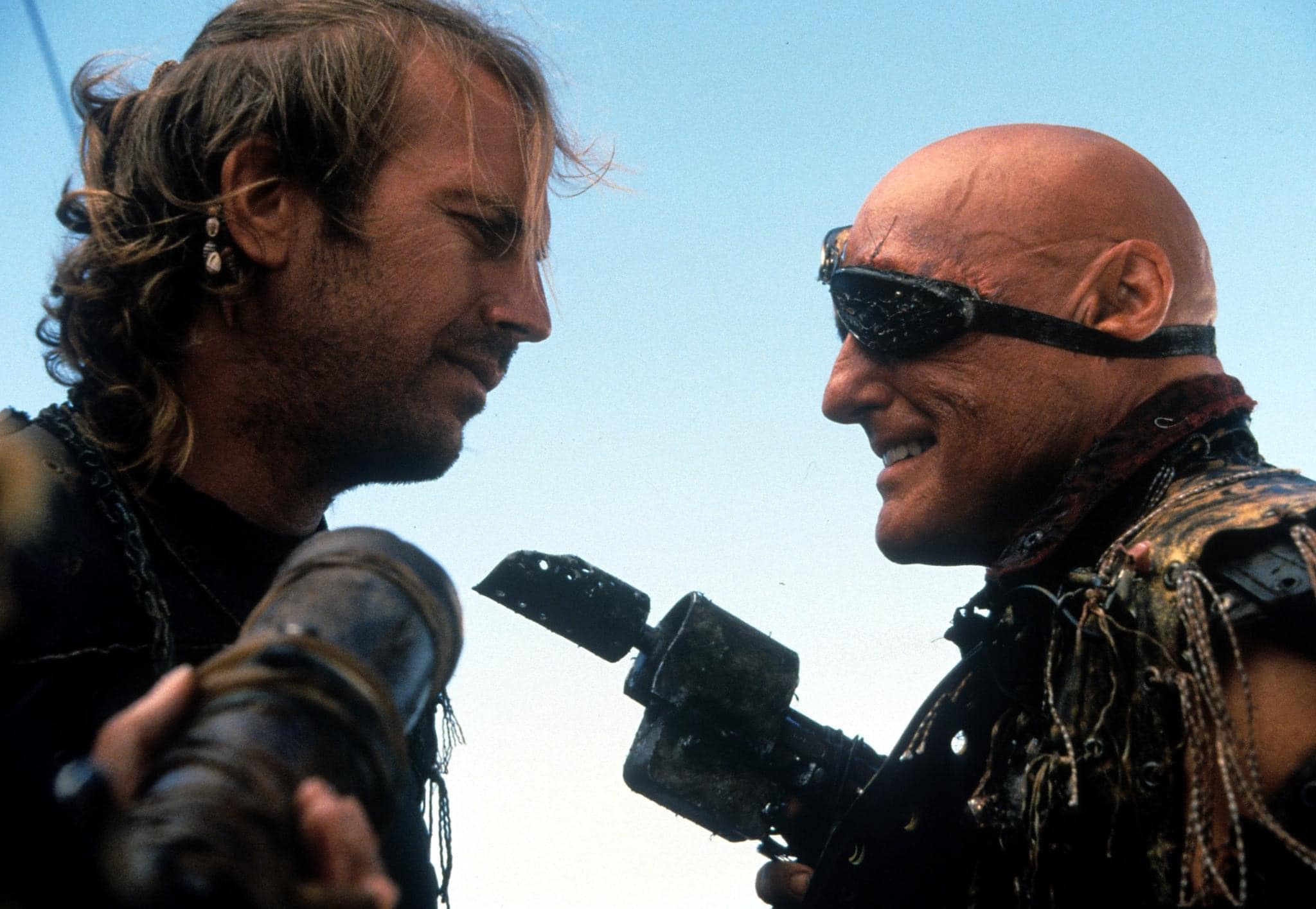
Escaping with Helen and Enola, The Mariner initially intends to abandon them to their fate. However, as they journey across the treacherous waters, he begins to bond with them, especially Enola, who sees The Mariner as a father figure. Together, they face numerous dangers, including hostile sea creatures, environmental hazards, and relentless attacks from the Smokers, who will stop at nothing to capture Enola and find Dryland for themselves.
As the group travels, The Mariner’s hardened exterior begins to soften. His growing attachment to Helen and Enola challenges his cynical worldview, and he becomes increasingly determined to protect them from the Deacon and his marauders. Along the way, they encounter a range of colorful characters, from eccentric traders to other survivors eking out an existence in the unforgiving ocean.
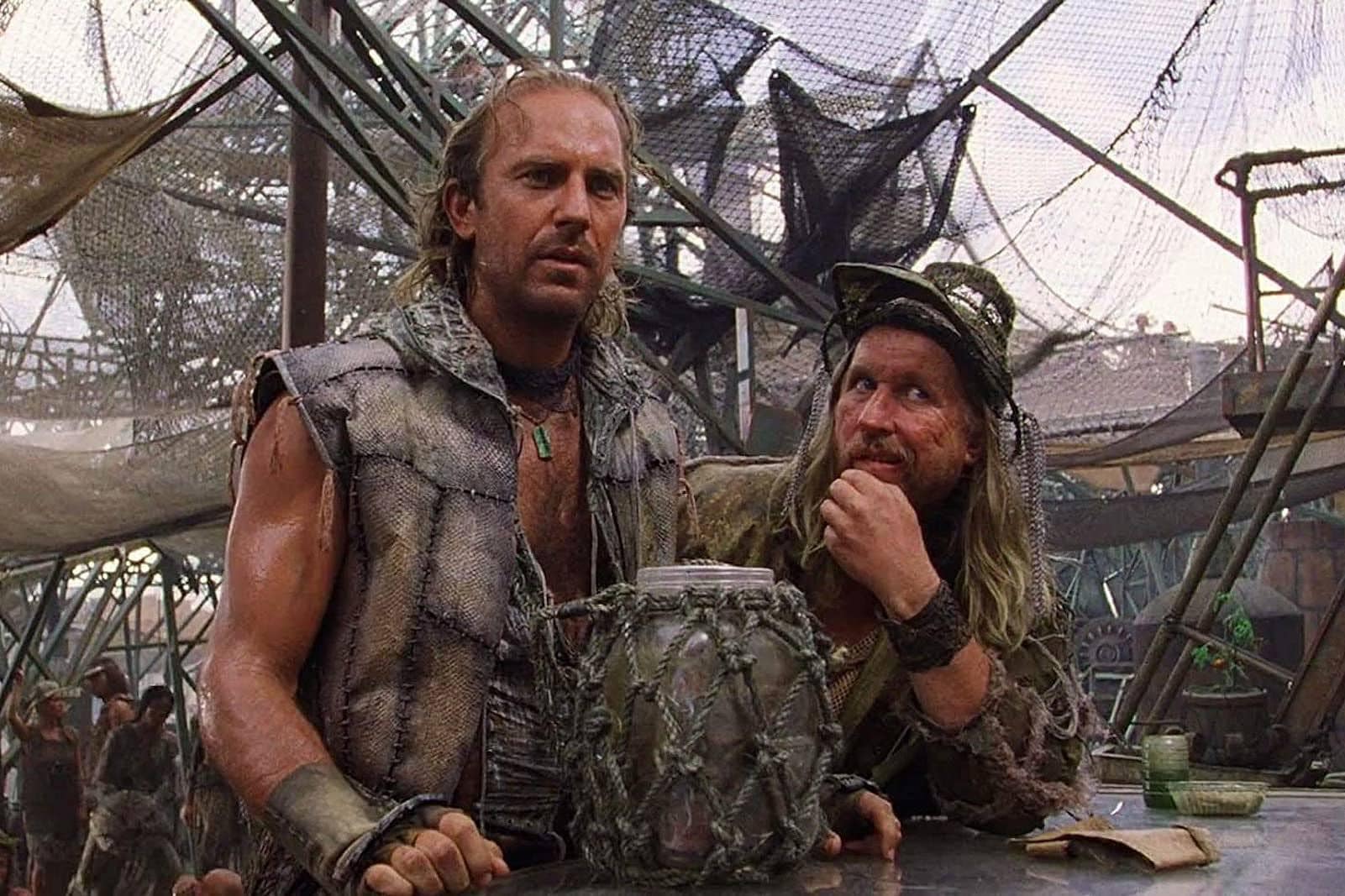
The film culminates in a dramatic showdown aboard the Smokers’ massive oil tanker, where The Mariner confronts Deacon in a desperate bid to save Enola and prevent the Smokers from exploiting the secrets of Dryland. In the end, The Mariner’s selfless actions lead to a surprising discovery—the fabled Dryland is real, a lush and fertile mountaintop that offers a glimpse of hope for humanity’s future.
“Waterworld” is notable for its ambitious scope and production scale, with vast water sets and groundbreaking special effects that brought the oceanic world to life. Despite facing production challenges and becoming infamous for its budget overruns, the film has since gained a cult following for its unique vision and adventurous spirit. It presents a stark warning about environmental disaster while also celebrating the resilience of the human spirit in the face of overwhelming odds.
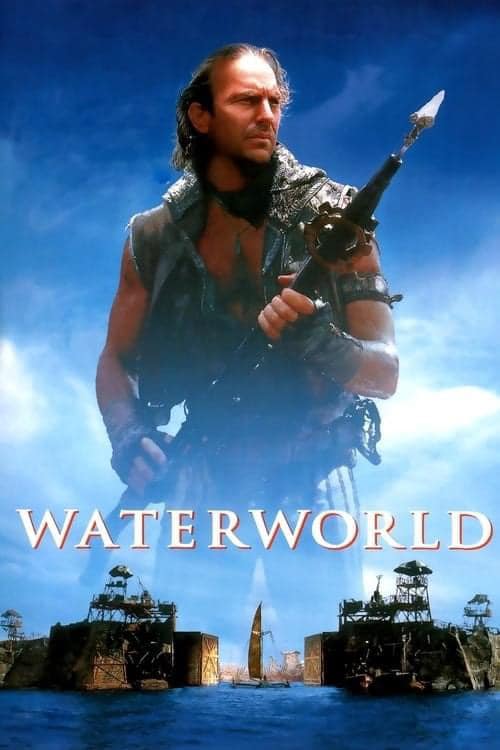
WATCH:

“Terra Nova” (2011) is a science fiction television series that aired on Fox.
“Terra Nova” (2011) is a science fiction television series that aired on Fox, blending elements of adventure, mystery, and drama within a futuristic setting. The show, produced by Steven Spielberg among others, explores the concept of time travel as a means of survival for humanity, set against the backdrop of a prehistoric world filled with dinosaurs and untamed wilderness.
The series is set in the year 2149, where Earth is overpopulated and suffering from severe environmental degradation. Pollution has rendered the planet nearly uninhabitable, and the human race faces extinction due to dwindling resources and a toxic atmosphere. To avoid total collapse, scientists discover a temporal rift that leads 85 million years into the past, to the Cretaceous period of Earth. This rift offers a chance for a fresh start, a second Eden where humans can live in harmony with nature and rebuild civilization from the ground up.
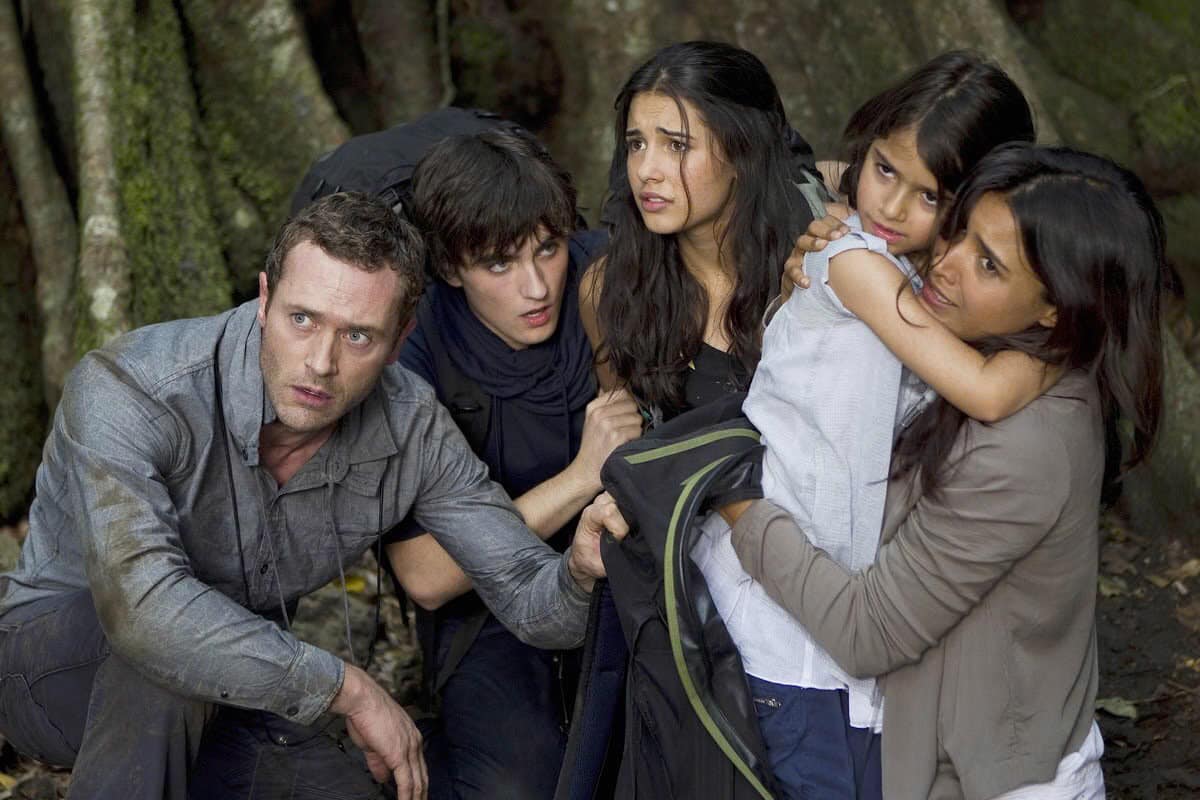
“Terra Nova” follows the Shannon family as they are chosen to join the 10th pilgrimage to the titular colony in the past. Jim Shannon (Jason O’Mara), a former police officer, his wife Elisabeth (Shelley Conn), a talented doctor, and their three children—Josh (Landon Liboiron), Maddy (Naomi Scott), and Zoe (Alana Mansour)—are thrust into a strange and dangerous new world. The colony, led by Commander Nathaniel Taylor (Stephen Lang), aims to establish a thriving human society in this untouched prehistoric land, free from the mistakes that led to the downfall of the future.
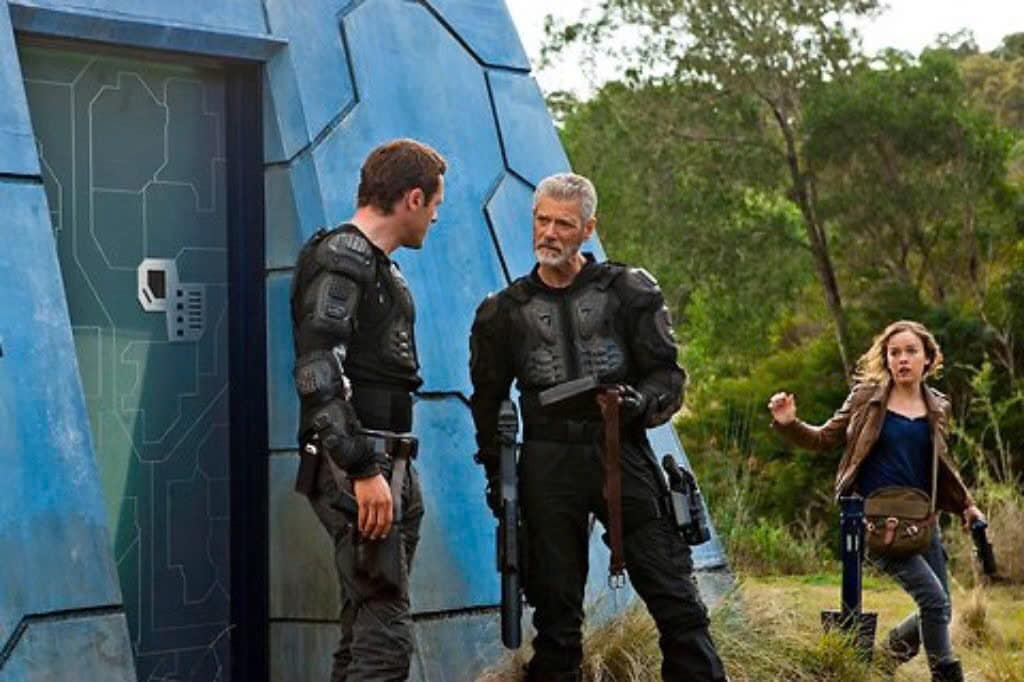
However, life in Terra Nova is far from idyllic. The settlers must contend with the ever-present threat of dinosaurs, from aggressive carnivores like the fearsome Carnotaurus to other unknown dangers lurking in the jungle. In addition to the natural hazards, the colony faces internal and external conflicts. A rebel group known as the “Sixers,” led by Mira (Christine Adams), opposes Taylor’s leadership and has their own agenda, believing that the future can be changed to their advantage.
As the series progresses, deeper mysteries begin to unfold. The Shannons discover that the rift to the past may not be as random as it seems, and there may be a greater purpose behind their journey to Terra Nova. The show explores themes of family, survival, ethical dilemmas, and the human drive to start anew. Conflicts arise over how to interact with the prehistoric environment, the ethical implications of altering the past, and the potential consequences for the future.
Despite its ambitious premise and high production values, “Terra Nova” struggled with ratings and was ultimately canceled after its first season. However, the show remains a cult favorite among science fiction fans for its unique concept, engaging storylines, and visual effects that brought the Cretaceous period vividly to life. The series also sparked discussions about humanity’s relationship with the environment, the possibility of second chances, and the ethical responsibilities of scientific advancements.
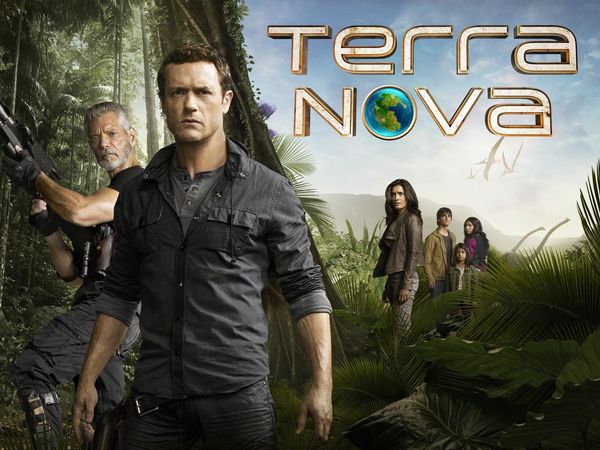
WATCH:
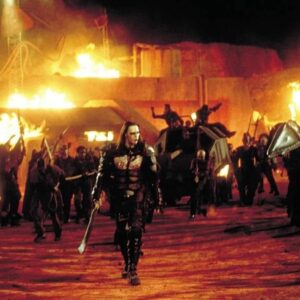
Ghosts of Mars (2001) is a science fiction horror film directed by John Carpenter.
“Ghosts of Mars” (2001) is a science fiction horror film directed by John Carpenter, known for his unique blend of genre elements and atmospheric storytelling. Set in a bleak, futuristic vision of Mars, the film combines elements of action, horror, and westerns, creating a gritty narrative about survival against a supernatural threat.
The story takes place in the year 2176 on a colonized Mars, where humans have established mining operations and outposts across the planet’s red, desolate landscape. The Martian government is led by a matriarchal society, and the planet is policed by a force tasked with maintaining order in the often lawless environment. Lieutenant Melanie Ballard (Natasha Henstridge), a tough and seasoned officer, is assigned to lead a team to the remote mining town of Shining Canyon. Their mission is to transport a dangerous prisoner, Desolation Williams (Ice Cube), a notorious criminal accused of multiple murders, back to the main settlement for trial.
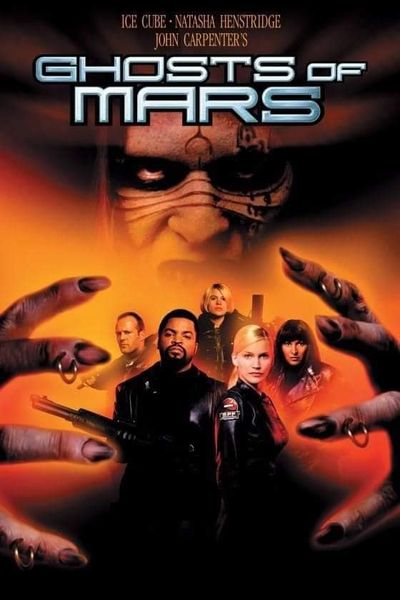
However, when Ballard and her team, including Sergeant Jericho Butler (Jason Statham), Officer Bashira Kincaid (Clea DuVall), and rookie officer Michael Descanso (Liam Waite), arrive at Shining Canyon, they find the town eerily deserted. As they investigate, they discover a grisly scene: the miners and townspeople have been brutally massacred or are acting in a state of violent frenzy. It soon becomes clear that the mining operations have unearthed an ancient Martian tomb, releasing a malevolent force—disembodied spirits of an ancient Martian warrior race. These spirits possess the bodies of the living, driving them into a bloodthirsty rage and forcing them to attack anyone in sight.
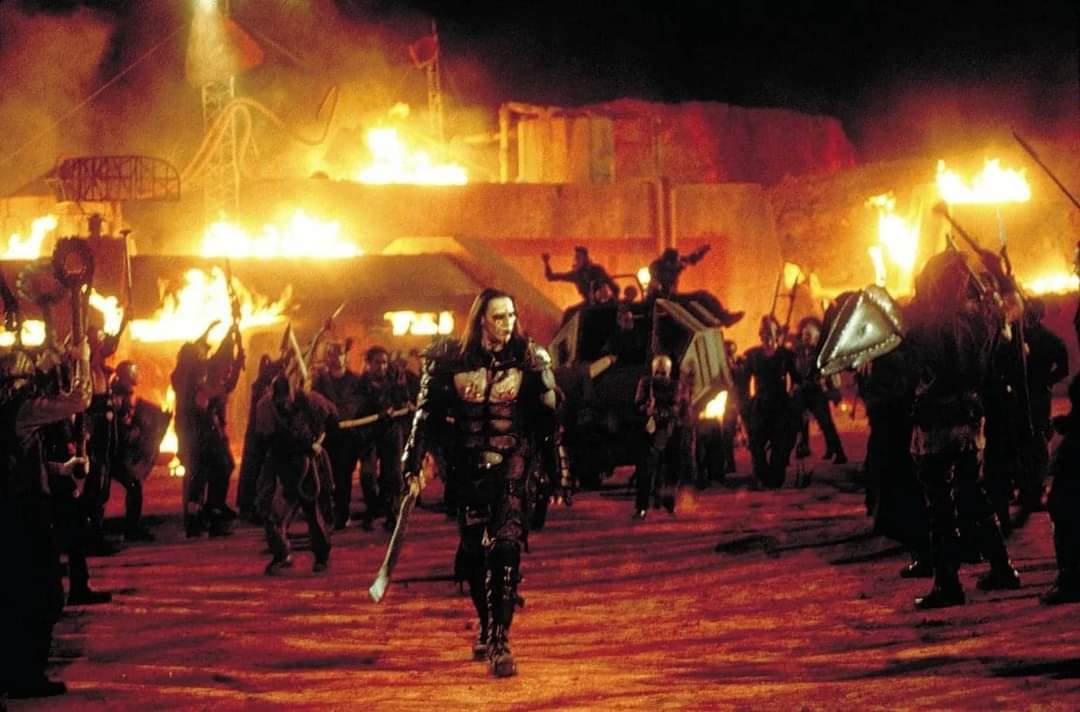
However, when Ballard and her team, including Sergeant Jericho Butler (Jason Statham), Officer Bashira Kincaid (Clea DuVall), and rookie officer Michael Descanso (Liam Waite), arrive at Shining Canyon, they find the town eerily deserted. As they investigate, they discover a grisly scene: the miners and townspeople have been brutally massacred or are acting in a state of violent frenzy. It soon becomes clear that the mining operations have unearthed an ancient Martian tomb, releasing a malevolent force—disembodied spirits of an ancient Martian warrior race. These spirits possess the bodies of the living, driving them into a bloodthirsty rage and forcing them to attack anyone in sight.
Trapped in the desolate outpost, Ballard and her team are forced to join forces with Desolation Williams and his fellow prisoners to survive the onslaught of the possessed miners. As the possessed become increasingly hostile and their numbers grow, the survivors must find a way to contain the threat and escape before the ancient Martian spirits can spread further across the planet.
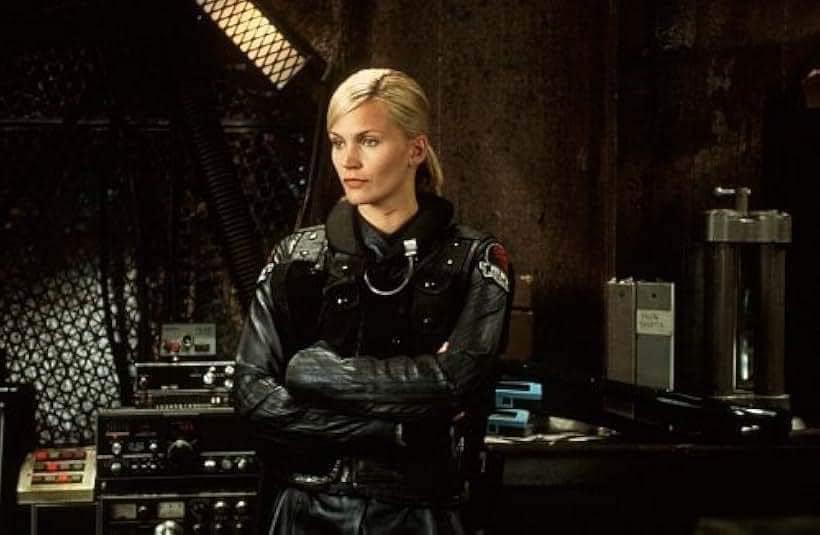
The film builds tension through a series of escalating confrontations, where the survivors fight off wave after wave of possessed miners using makeshift weapons and explosives. Carpenter’s direction blends his signature style of atmospheric tension and practical effects, creating a visually striking portrayal of Mars as a haunting, hostile landscape. The red dust of the Martian surface, combined with the eerie, guttural screams of the possessed, adds to the sense of dread and otherworldliness.
“Ghosts of Mars” explores themes of colonization, cultural conflict, and the clash between science and superstition. The film also draws on Carpenter’s fascination with anti-heroes and moral ambiguity, as the lines between law enforcement and outlaws blur in their struggle for survival. The characters are forced to make difficult choices, revealing the darker sides of human nature when pushed to the brink.
Despite receiving mixed reviews upon its release, “Ghosts of Mars” has since gained a cult following for its unique blend of horror, science fiction, and action. The film is often praised for its practical effects, Carpenter’s iconic score, and its unapologetically B-movie charm. It stands as a testament to John Carpenter’s distinctive voice in the genre, blending familiar tropes with fresh ideas to create a tense and entertaining narrative about the perils of human hubris and the unseen dangers lurking in the unknown.
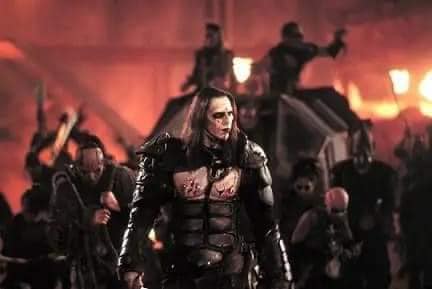
WATCH:

Firestarter (1984) is a supernatural horror film directed by Mark L.
Firestarter (1984) is a supernatural horror film directed by Mark L. Lester, based on Stephen King’s 1980 novel of the same name. The story follows a young girl named Charlie McGee, played by Drew Barrymore, who possesses pyrokinetic abilities—the power to start fires with her mind. These abilities are the result of a government experiment conducted on her parents, Andy and Vicky McGee, portrayed by David Keith and Heather Locklear.
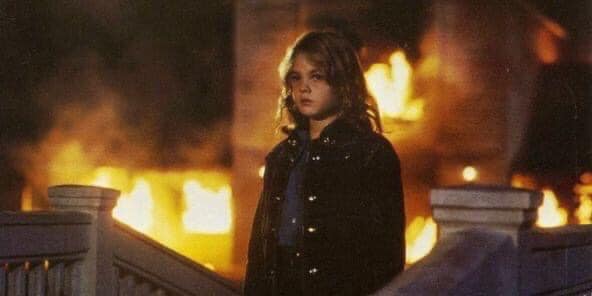
The plot centers on the McGee family as they are pursued by a secret government agency known as “The Shop,” which seeks to capture Charlie and use her powers as a weapon. Andy, who also possesses a mild form of mind control known as “the push,” tries to protect his daughter from the relentless agents led by the sinister Captain Hollister, played by Martin Sheen. The film builds tension as Charlie’s powers grow increasingly uncontrollable, leading to explosive confrontations.
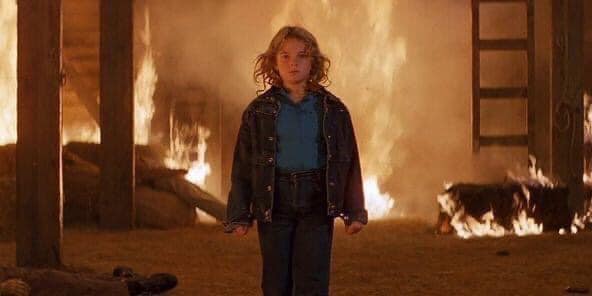
As Charlie and her father go on the run, the film explores themes of innocence corrupted by power and the dangers of governmental overreach. The climax is a fiery showdown between Charlie and the agents of The Shop, where her full destructive potential is unleashed.
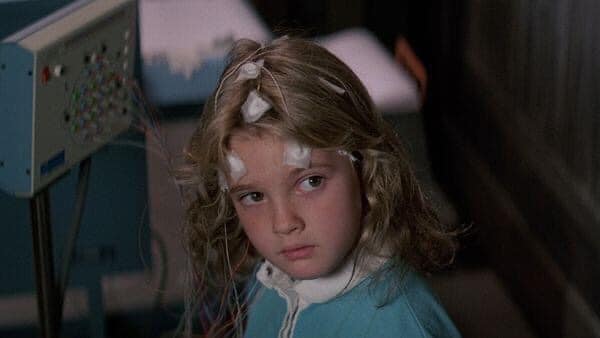
Firestarter is notable for its portrayal of a child grappling with extraordinary and dangerous abilities, as well as for its intense special effects, particularly in the depiction of fire and pyrotechnics. The film has become a cult classic, recognized for its blend of horror, science fiction, and suspense, along with Barrymore’s compelling performance as the young girl struggling with her terrifying gift.
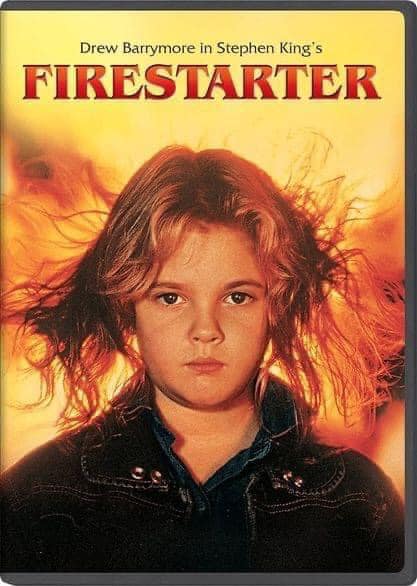
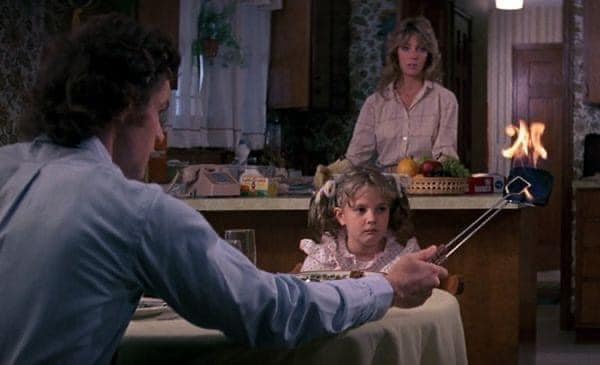
WATCH:
